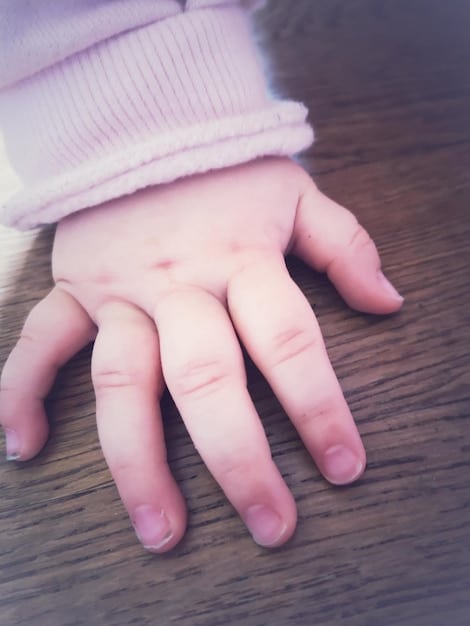Is Your Child Being Bullied? 5 Warning Signs Every Parent Should Know

Is Your Child Being Bullied? 5 Warning Signs Every Parent Should Know: As a parent, understanding the signs of bullying is crucial; this article provides five vital warning signs to help you identify if your child is being bullied and offers guidance on how to provide support and seek help.
Parenting is a journey filled with joy and challenges, but one of the most concerning situations a parent can face is the possibility of their child being bullied. Recognizing the subtle signs and understanding how to respond can make all the difference in a child’s life. This article, **Is Your Child Being Bullied? 5 Warning Signs Every Parent Should Know**, aims to equip you with the knowledge and tools to identify and address bullying effectively.
Understanding Bullying: More Than Just Teasing
Before diving into the warning signs, it’s essential to understand what bullying truly entails. Bullying is more than just playful teasing or occasional arguments; it is a repeated behavior intended to harm or intimidate someone. It can take many forms, including physical, verbal, social, and cyberbullying.
Defining Bullying
Bullying is characterized by an imbalance of power, where one person or group targets another, often leaving the victim feeling helpless and isolated. Recognizing the specific characteristics of bullying is the first step in addressing the issue.
Forms of Bullying
Bullying can manifest in various ways, each with its own unique impact on the victim. Understanding these different forms can help parents identify potential issues:
- Physical Bullying: This involves physical harm like hitting, kicking, or damaging property.
- Verbal Bullying: This includes name-calling, insults, and threats.
- Social Bullying: This involves exclusion, spreading rumors, and damaging social relationships.
- Cyberbullying: This type of bullying occurs online through social media, texts, or emails.
Bullying is a pervasive issue that can significantly impact a child’s well-being, making it crucial for parents to be vigilant and proactive in recognizing the signs and providing support.
Warning Sign 1: Unexplained Injuries
One of the most noticeable signs that your child is being bullied is the presence of unexplained injuries. While kids are prone to bumps and bruises, a pattern of injuries without a clear explanation can be a red flag.

Physical Indicators
Look for injuries such as bruises, scratches, cuts, or even broken items that your child cannot explain. These physical indicators can be a direct result of physical bullying.
Behavioral Changes
Alongside physical signs, pay attention to any unusual behavioral changes that might accompany these injuries. A child who is being bullied may become withdrawn or anxious, especially when asked about their injuries.
- Reluctance to go to school
- Changes in eating or sleeping habits
- Increased anxiety or fear
Recognizing unexplained injuries as a potential sign of bullying is a crucial step in ensuring your child’s safety and well-being. Addressing these concerns promptly can prevent further harm and provide your child with the necessary support.
Warning Sign 2: Loss of Belongings
Another concerning sign that your child might be experiencing bullying is the frequent loss of belongings. This can range from missing lunch money to damaged or lost personal items.
Patterns of Loss
Notice if there is a recurring pattern of your child losing things or coming home with damaged possessions. While occasional mishaps are normal, a consistent pattern could indicate bullying.
Emotional Impact
Pay attention to how your child reacts to these losses. If they seem unusually upset, anxious, or scared to discuss the missing items, it could be a sign that they are being targeted.
- Missing lunch money or snacks
- Damaged clothing or school supplies
- Lost or stolen personal items
Frequent loss of belongings can be a subtle but significant indicator of bullying. By being attentive and supportive, you can help your child feel safe enough to share what’s happening and take steps to address the issue.
Warning Sign 3: Changes in Eating Habits

Significant changes in your child’s eating habits can also be a sign of bullying. These changes can manifest as a loss of appetite or, conversely, as binge eating or hoarding food.
Loss of Appetite
If your child suddenly starts skipping meals, picking at their food, or complaining of stomach aches, it could be a sign of underlying stress or anxiety related to bullying.
Binge Eating or Hoarding Food
On the other hand, some children may cope with bullying by overeating or hiding food. This can be a way to deal with the emotional distress caused by bullying.
Emotional Eating
Bullying can cause significant emotional distress, leading to unhealthy coping mechanisms. Pay attention to whether your child’s eating habits change in response to stressful situations or feelings of isolation.
Changes in eating habits can be a subtle but important indicator of bullying. By being aware of these changes and offering support, you can help your child develop healthier coping strategies and address the root cause of their distress.
Warning Sign 4: Sleep Disturbances
Sleep disturbances are another sign that your child may be experiencing bullying. These disturbances can include difficulty falling asleep, frequent nightmares, or bedwetting.
Difficulty Falling Asleep
If your child is suddenly struggling to fall asleep or seems restless at night, it could be due to the anxiety and stress caused by bullying.
Nightmares
Frequent nightmares, especially if they are recurring or particularly vivid, can be a sign that your child is dealing with unresolved emotional trauma related to bullying.
Bedwetting
Bedwetting, particularly in children who have previously been dry at night, can be a sign of stress or anxiety. This can be a sensitive issue, so approach it with empathy and understanding.
- Trouble falling asleep
- Frequent nightmares
- Bedwetting (especially in older children)
Sleep disturbances can have a significant impact on a child’s overall well-being. By recognizing these signs and providing a supportive environment, you can help your child address the underlying issues and improve their sleep quality.
Warning Sign 5: Withdrawal and Secrecy
One of the most telling signs of bullying is when a child starts to withdraw from activities they once enjoyed and becomes increasingly secretive about their life.
Loss of Interest
If your child suddenly loses interest in hobbies, sports, or spending time with friends, it could be a sign that they are being isolated or targeted by bullies.
Increased Secrecy
Pay attention if your child becomes less communicative and more secretive about their school life, friendships, or online activities. They may be trying to hide the bullying from you.
- Avoiding social situations
- Becoming secretive about phone or computer use
- Decline in academic performance
Withdrawal and secrecy can be indicators that your child is feeling ashamed, embarrassed, or scared to talk about what’s happening. Creating a safe and supportive environment where they feel comfortable sharing their experiences is crucial.
| Key Point | Brief Description |
|---|---|
| 🤕 Unexplained Injuries | Frequent injuries without clear explanations can be a sign of physical bullying. |
| 🧸 Loss of Belongings | Consistent loss or damage to items may indicate bullying. |
| 🍔 Changes in Eating Habits | Sudden changes in appetite can signal emotional distress from bullying. |
| 😴 Sleep Disturbances | Trouble sleeping and nightmares can indicate anxiety related to bullying. |
Frequently Asked Questions
▼
Talk to your child, listen without judgment, and gather as much information as possible. Contact the school authorities and work together to create a safe environment for your child.
▼
Offer reassurance and empathy. Let them know it’s not their fault and that you’re there to help. Encourage them to express their feelings and seek professional counseling if needed.
▼
Schools have a responsibility to create a safe environment for all students. They should have anti-bullying policies and procedures in place to address and prevent bullying incidents.
▼
Teach your child to stand up for themselves assertively by using “I” statements, setting boundaries, and seeking help from trusted adults when needed. Emphasize kindness and respect in all interactions.
▼
There are many organizations dedicated to bullying prevention, such as StopBullying.gov and Pacer’s National Bullying Prevention Center. These organizations offer resources, support, and educational materials for parents and children.
Conclusion
Recognizing the signs of bullying is a critical step in protecting your child’s well-being. By staying informed, observant, and supportive, you can create an environment where your child feels safe and empowered to speak up. Remember, you are your child’s greatest advocate, and your vigilance can make a world of difference.





